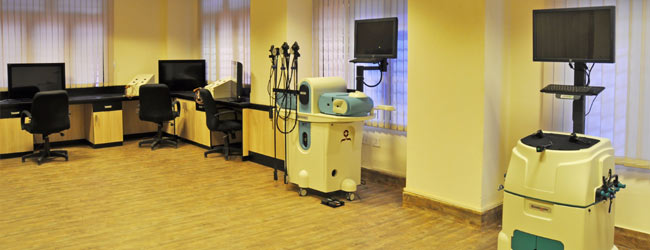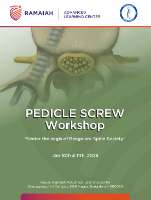Simulation Lab
The need for Simulated learning
Simulation is the creation of an artificial environment for education, assessment, and research & health system integration with the purpose of improving patient safety, effectiveness & efficiency of delivery of health care. This will also add to the understanding of the stress response of medical professional in the simulated environment. Health care workers are at risk constantly acquiring infectious diseases like HIV & Hepatitis due to accidental injury in the process of patient care. Honing their motor skills in a simulated environment viz. learn to give injections, perform invasive procedures will help reduce or avoid these work related injuries.
Simulated training has its origin in the aircraft flying where the safety of many passengers is at stake. Each pilot is said to have a minimum number of flying hours on the simulators before he can fly an actual aircraft & also needs to put in a few hours of simulated flying each year. This is akin to the mandatory Continuing Medical Education (CME) credits which are in place in some countries but yet to see the light of day in India.
Today simulated learning can be done with
- Mannikins made to look & function in part like a human body
- Surgical training with mannikins to simulate human organs
- Computerised mannikins that respond to all forms of medication & other treatment
- Surgical training on human cadaver specially prepared for this purpose
- Simulated learning with digital simulators
The first two are essentially meant to train the undergraduate in addition to his /her regular curricular studies. The first three can be used to train the Emergency medicine & critical care management very effectively & periodic courses can help update their knowledge.
Surgical training in specially prepared cadaver is a boon to the aspiring surgeon where he/she can perform the surgery on the human cadaver which looks & feels like the live human body barring the bleeding.
Digital simulators are a good tool for the practice of certain types of invasive procedures like Gastrointestinal Endoscopy & laparoscopy where the technology has not only simulated the internal appearance but also as appropriate haptic feedback making it actually feel & look like normal tissue.
Simulated training for the medical professional is a boon & the regulatory authorities controlling medical colleges & medical practioneers should make an effort to include this vital training aspect into the curriculum.
The Ramaiah Advanced Learning Center has been designed & implemented with state of the art facilities to meet these training needs of the medical professional.




